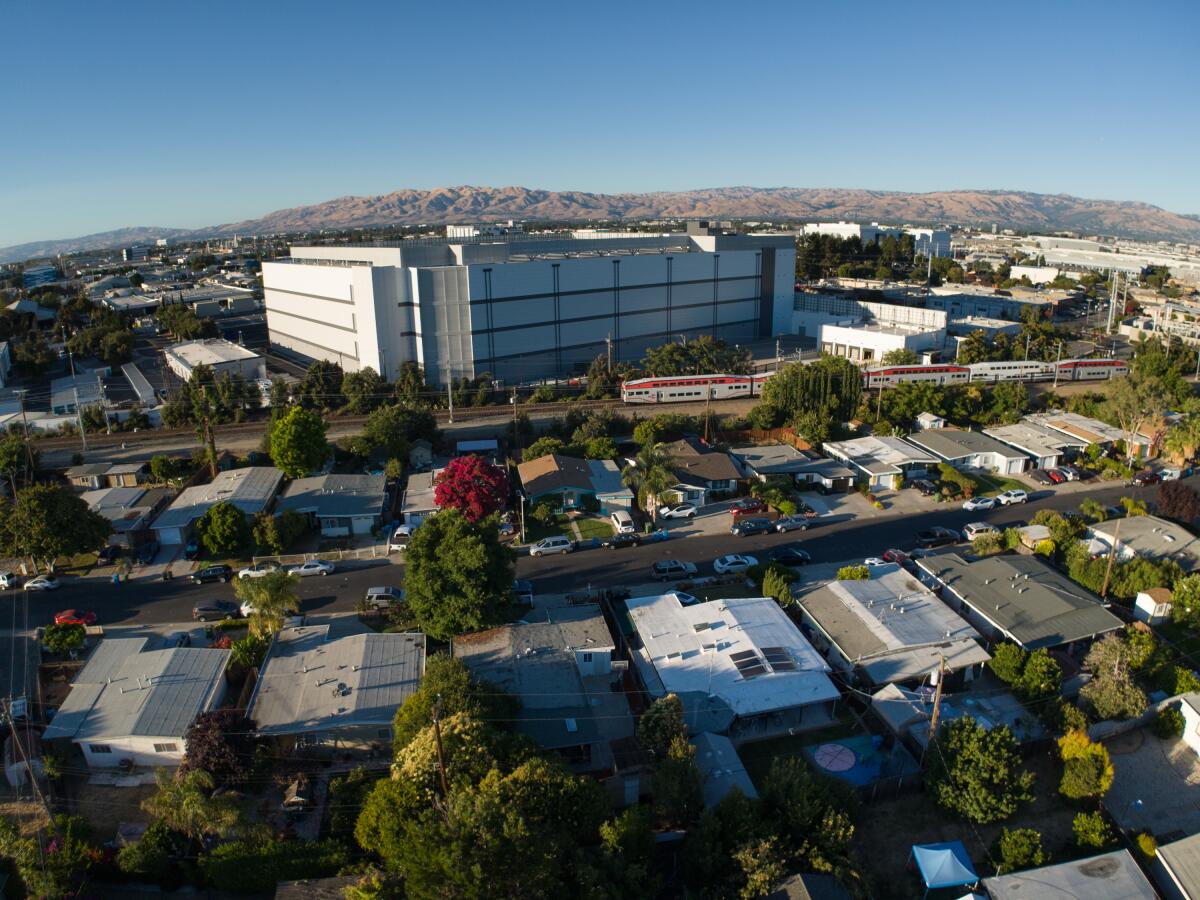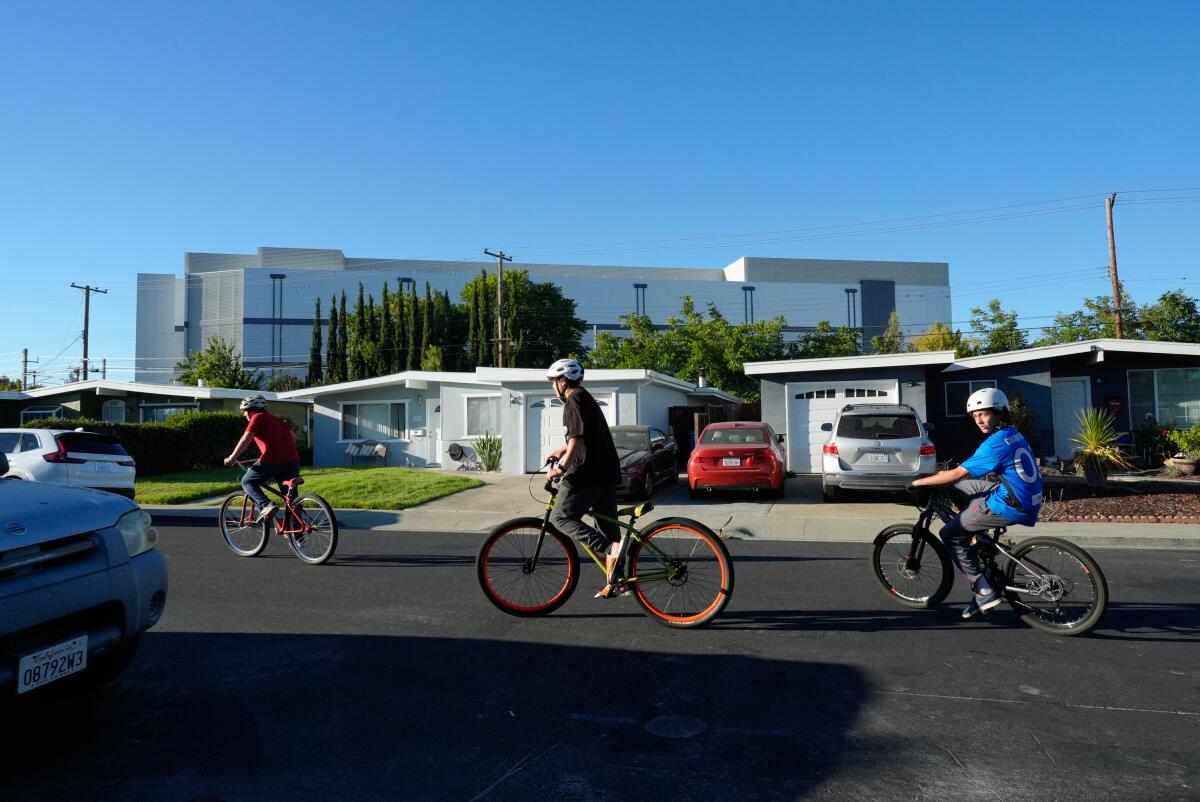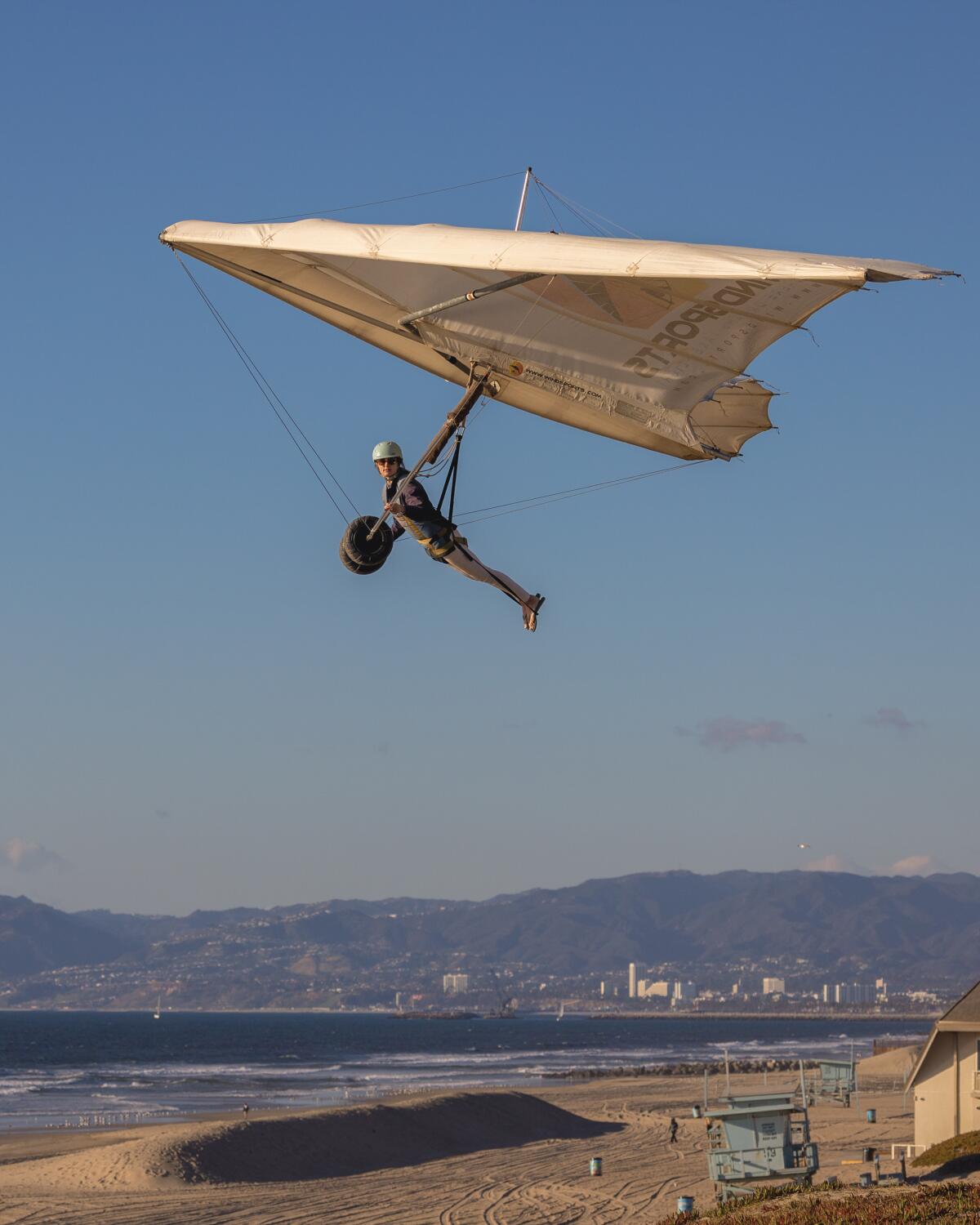Data centers are hungry, thirsty and growing. What’s that mean for California’s energy future?

- Share via
Good morning. It’s Tuesday, Aug. 13. Here’s what you need to know to start your day.
- How the data center boom is straining resources.
- A magnitude 4.4 earthquake rattled Southern California.
- The ultimate Norton Simon guide: 22 essential artworks from the underrated museum.
- And here’s today’s e-newspaper.
You're reading the Essential California newsletter
Our reporters guide you through our biggest news, features and recommendations every morning
You may occasionally receive promotional content from the Los Angeles Times.
How the data center boom is straining resources
When we search Google, stream a movie or shop online, the computing power necessary to accomplish those internet-based tasks probably isn’t front of mind.
But all our digital actions require massive warehouses full of servers to process and store an ever-expanding universe of data. More of these large data centers are being proposed and built across the Golden State.
The Times’ Melody Petersen reported this week that concerns are mounting that data centers are gobbling up electricity at an unsustainable rate, putting California in a precarious power position and threatening to derail ambitious clean energy goals.
“Experts warn that the frenzy of data center construction could delay California’s transition away from fossil fuels and raise electric bills for everyone else,” Melody wrote. “The data centers’ insatiable appetite for electricity, they say, also increases the risk of blackouts.”

The advent of generative AI is of particular concern to energy experts, because the chips required to sift through vast amounts of data and produce responses use a lot more electricity than a typical chip.
For instance, a search with ChatGPT consumes 10 times the power as a Google search without artificial intelligence, according to the International Energy Agency.
Data centers siphon a lot of power (and water)
There are more than 270 data centers in California, with the heaviest concentrations in Santa Clara and Los Angeles counties.
Keeping those facilities running requires an increasing amount of power, which some energy researchers and utility officials warn is putting additional strain on a grid that doesn’t inspire much confidence on its own.
Melody cited an analysis by the nonprofit GridClue, which ranked California 49th of the 50 states for energy resilience: “the ability to avoid blackouts by having more electricity available than homes and businesses need at peak hours.”
And as your thighs might know from running a lot of apps and programs on your laptop, computing generates heat. Massive warehouses full of servers produce a lot of heat, meaning more energy and water are needed to keep those facilities cool.
For example, the Oregonian reported last year that Google’s data centers in the Dalles, Ore., accounted for more than a quarter of the city’s water use.
Since California’s water supply is already projected to shrink in the coming decades because of climate change, opening more data centers that require more of that key resource does not bode well.
“I’m just surprised that the state isn’t tracking this, with so much attention on power and water use here in California,” Shaolei Ren, associate professor of electrical and computer engineering at UC Riverside, told Melody.
More data centers are coming online
As investments in AI technologies increase, so does the construction of more data centers to continue feeding and training the data- and power-hungry systems.
Pacific Gas & Electric told investors this year that it has received more than two dozen applications for new data centers, which would use 3.5 gigawatts of power in total. That’s the output of three new nuclear reactors, Melody said, enough to power nearly 5 million homes.
And it’s not just in California; facilities are being developed across the nation and around the world.
To power this hungry tech that’s framed by proponents as a leap into the future, some regions are turning to old energy sources, like coal. Some major AI industry players have suggested a resurgence of nuclear power to help keep their lights on and their chips cool.
Given the concerns about worsening our already strained grid and undermining state goals to use energy more sustainably and responsibly, why aren’t people in power pumping the brakes on more data centers?
As shocking as it may seem, it comes down to money, as Melody explained:
“Today’s stock market rewards companies that say they are investing in AI. Electric utilities profit as power use rises. And local governments benefit from the property taxes paid by data centers.”
You can read more of Melody’s reporting here.
Today’s top stories

Earthquake
- A Magnitude 4.4 earthquake rattled Los Angeles, and was felt over wide area.
- The earthquake was centered on notorious L.A. fault system
- The modest quake packed a punch: “It felt like a truck hit the building.”
- Watch Malika Andrews stay calm on-air while the quake shook ESPN’s L.A. studios.
- Here’s How to get California’s early warning earthquake alerts.
On the campaign trail
- Tim Walz will kick off a solo campaign tour in L.A.
- JD Vance and the politics of vegetarianism in a red-meat Republican Party.
- Trump’s rally music is appropriate for all the wrong reasons.
- Kamala Harris raised $13 million at an event San Francisco that felt more like a family reunion
Cops
- ‘Mercenary group’ with ex-L.A. County deputies hired in extortion scheme, feds allege.
- 6 California police officers paid someone to take college courses for them. Now they face prison
First day of school
- Smiles, ‘butterflies’ and a little boy cries ‘I want my mom.’ Yesterday was LAUSD’s first day of school
- Here’s what 9 teens wore on the first day of school in L.A. “First impressions are everything,” one told us.
- Dr. Dre and Jimmy Iovine are going to open a high school in Inglewood as the district faces school closures
L.A. Olympics 2028
- Long Beach — no, not Venice — starred in the Olympics closing ceremony with Snoop, Dr. Dre, Billie Eilish
- Here’s how to purchase tickets for 2028 Los Angeles Olympic Games.
- LA28 touted an ‘authentically Los Angeles’ Olympics as it took the handoff from Paris.
- ‘The clock is ticking.’ The Olympic flag arrived in L.A. and LA28 gets to work.
- L.A. is too ugly now to host the Olympics. Here’s how we can fix it before 2028.
More big stories
- This is now California’s worst summer COVID wave in years. Here’s why.
- Musk says ‘massive’ attack by hackers has caused glitches in interview with Trump.
- L.A. city attorney is searching through employee emails, creating a climate of fear, staffer alleges.
Get unlimited access to the Los Angeles Times. Subscribe here.
Commentary and opinions
- Anita Chabria: Is Trump’s hate finally catching up to him?
- Patt Morrison: Where did L.A. radio and TV station call letters come from? And why do they all start with K?
- Dylan Hernandez: For Dodgers, every game is feeling like a postseason game.
- Lorraine Ali: When Trump’s rally music is appropriate for all the wrong reasons.
- Editorial board: A ransomware attack closed L.A. courts for two days. The public deserves a full accounting.
Today’s great reads
In L.A.’s tough housing market, cramped family adds ADU rather than move. A tiny bungalow in Los Angeles nearly doubles in size thanks to a modern addition and ADU. When the homeowners looked to move, the real estate market was unaffordable.
Other great reads
- The superpower Maya Erskine found while starring in ‘Mr. & Mrs. Smith.’
- Making period dramas can be uncomfortable. For Carrie Coon, ‘Gilded Age’ is the exception.
How can we make this newsletter more useful? Send comments to essentialcalifornia@latimes.com.
For your downtime

)
Going out
- 🖼️ The ultimate Norton Simon guide: 22 essential artworks at one of SoCal’s underappreciated museums.
- 🍨 This restaurant’s cold, creamy tofu is the only thing I want to eat right now.
- 🥟 Bar Sinizki, an Atwater Village bar, captures Eastern European cafe culture, complete with a family recipe for pierogis.
Staying in
- 📻 On ‘Funeral Soundtrack #4,’ Destroy Boys show signs they’re really just starting to live.
- 📺 ‘The Bachelor’ has announced its new lead.
- 📖 ‘Under the Bridge’ writer Rebecca Godfrey died while writing her new novel. Her friend Leslie Jamison finished it.
- 🧑🍳 Here’s a recipe for Chickpea frittata with tomatoes and kale.
- ✏️ Get our free daily crossword puzzle, sudoku, word search and arcade games.
And finally ... a great photo
Show us your favorite place in California! We’re running low on submissions. Send us photos that scream California and we may feature them in an edition of Essential California.

Today’s great photo is from staff photographer Allen J. Schaben of a hang glider at Dockweiler State Beach.
Have a great day, from the Essential California team
Ryan Fonseca, reporter
Defne Karabatur, fellow
Andrew Campa, Sunday reporter
Kevinisha Walker, multiplatform editor and Saturday reporter
Christian Orozco, assistant editor
Stephanie Chavez, deputy metro editor
Karim Doumar, head of newsletters
Check our top stories, topics and the latest articles on latimes.com.
Sign up for Essential California
The most important California stories and recommendations in your inbox every morning.
You may occasionally receive promotional content from the Los Angeles Times.





